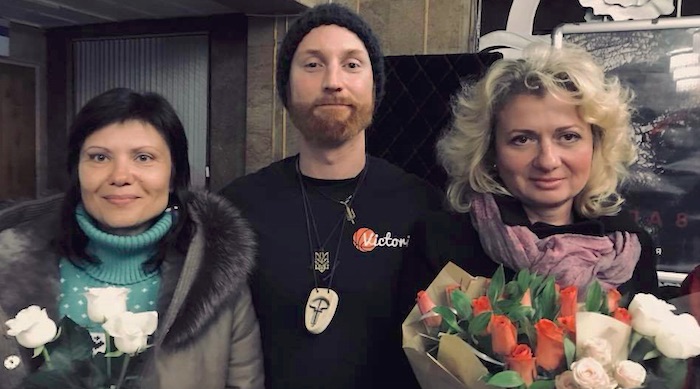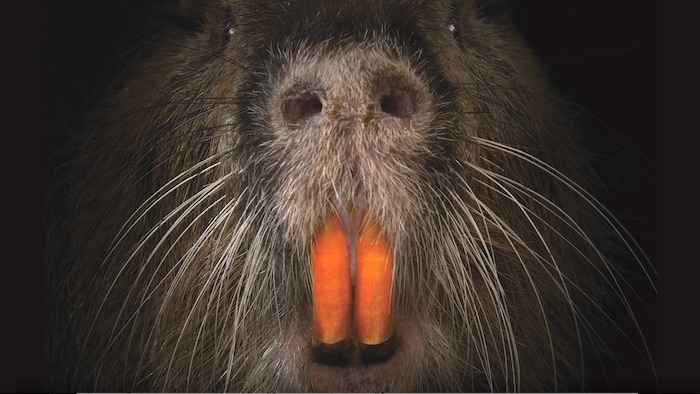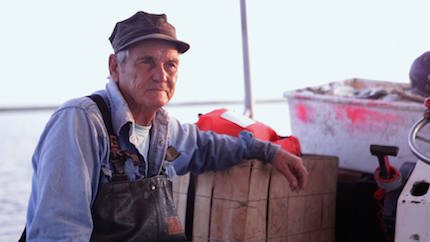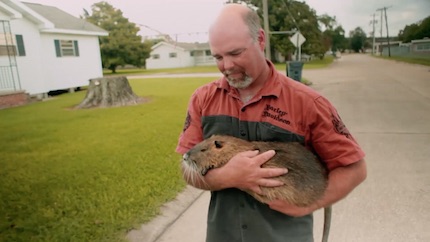TEXAN HEAT WON'T FAZE FANDANGO FANS CELEBRATING 80'S BROMANCE CLASSIC
 Tuesday, July 17, 2018 at 12:12PM
Tuesday, July 17, 2018 at 12:12PM Few places on Earth are hotter than west Texas in mid-July. Despite the scorching climate, a fan group devoted to a little seen 1985 film are gathering there to relive a 33 year-old cinematic rite-of-passage pilgrimage undertaken by five young men. Event overseer Jeffery Brookings, creator of the website Ultimate Fandango, understands why fans of the film Fandango have travelled from around the world to beat the heat and attend the 4-day event, which kicks off July 18.

“Anyone that has ever done a road trip with their buddies has done one or most of the things in the movie,” says Brookings, speaking to SCREEN-SPACE from his home in Midland, West Texas, on the eve of the 2018 Ultimate Fandango experience. “I know everyone in the movie, they were my friends, they just had different names,” he says. Brookings will welcome like-minded attendees, who have warmed to the film as passionately as any fan base, for what represents the 35th anniversary of the film beginning production in 1983.
 When finally released in the box-office doldrums of late-January 1985, writer/director Kevin Reynold’s debut feature barely raised an eyebrow. Despite the presence of hit-making producers Kathleen Kennedy and Frank Marshall, the star-making charisma of a then-unknown named Kevin Costner and warm notices from the few critics who saw it (The New York Times’ Janet Maslin said, “it successfully walks a fine line between sensitivity and swagger”), backers Warner Bros were Oscar-campaigning other films and had little time for Fandango. It landed in a mere 27 cinemas and crawled to meager US$92,000 in box office takings. (Pictured, above; Brookings, left, with actor Marvin J. McIntyre).
When finally released in the box-office doldrums of late-January 1985, writer/director Kevin Reynold’s debut feature barely raised an eyebrow. Despite the presence of hit-making producers Kathleen Kennedy and Frank Marshall, the star-making charisma of a then-unknown named Kevin Costner and warm notices from the few critics who saw it (The New York Times’ Janet Maslin said, “it successfully walks a fine line between sensitivity and swagger”), backers Warner Bros were Oscar-campaigning other films and had little time for Fandango. It landed in a mere 27 cinemas and crawled to meager US$92,000 in box office takings. (Pictured, above; Brookings, left, with actor Marvin J. McIntyre).
The film only began to connect with fans when it hit home video and cable television. Many sought it out when Costner hit big later that year in Silverado and American Flyers, then subsequently in The Untouchables (1987), No Way Out (1987), Bull Durham (1988) and Field of Dreams (1989).
 Set in 1971 and dealing with the shadow cast over America’s young men by the ongoing Viet Nam conflict, Fandango featured an eager ensemble who brought the bloke-y banter and cocky machismo, but also a sweet emotional resonance that lifted it beyond the coarse college comedies that were dominating the post-Porky’s box office. In addition to Costner’s firecracker man-child Gardner Barnes, the cast included Sam Robards (son of Jason) as sensitive soul, Kenneth; an against-type Judd Nelson as eager draftee, Phil; Chuck Bush as the gentle giant, Dorman; and, Brain Cesak soporific drunk, Lester. The narrative’s romantic pulse is provided by the beautiful Suzy Amis as ‘The Girl’, the comedy beats coming from hippie pilot Marvin J McIntyre and his wife, the late Glenne Headley. (Pictured, above; Costner, left, with Robards)
Set in 1971 and dealing with the shadow cast over America’s young men by the ongoing Viet Nam conflict, Fandango featured an eager ensemble who brought the bloke-y banter and cocky machismo, but also a sweet emotional resonance that lifted it beyond the coarse college comedies that were dominating the post-Porky’s box office. In addition to Costner’s firecracker man-child Gardner Barnes, the cast included Sam Robards (son of Jason) as sensitive soul, Kenneth; an against-type Judd Nelson as eager draftee, Phil; Chuck Bush as the gentle giant, Dorman; and, Brain Cesak soporific drunk, Lester. The narrative’s romantic pulse is provided by the beautiful Suzy Amis as ‘The Girl’, the comedy beats coming from hippie pilot Marvin J McIntyre and his wife, the late Glenne Headley. (Pictured, above; Costner, left, with Robards)
Brookings agrees that it is the chemistry generated by the cast that has ensured the enduring appeal of Fandango. “Some of it has to do with our age, the Viet Nam war and the draft, but mostly [it’s] the relationship between friends,” he says, noting that those in attendance are reacting to more than the film’s nostalgic all-American aesthetic. “Our fans are all ages and from all over the U.S. and the world,” he points out. “Every Fandango fan feels the same about the movie. It was not a box office smash hit, but we all love it.”
Brookings will lead the Ultimate Fandango attendees on a 1,000 mile odyssey, starting from his hometown and taking in key locations such as the Marfa cemetery, where Gardner and Kenneth flash-forward to ‘Nam during a fireworks fight; the gas station in Marathon, where Phil feels the cleansing qualities of a high-pressure car-wash hose; and Alpine, home of the drive-in theatre on the corner of E. Holland and N. Garrett streets, where Gardner woos Judy (Elizabeth ‘E.G.’ Daily).
 The road trip will make camp in Alpine on Thursday night for a screening of Fandango at the Rangra Theatre, where Brookings and his followers will welcome cast members McIntyre, Bush, Cesak and actress Robyn Rose for a pre-screening QA session. For Jeffery Brookings, it will be the culmination of a decades-long dedication to Fandango. “First hand stories from four of the actors and a chance very few of us had to see the movie on the big screen,” beams the ultimate fan, anticipating a night celebrating the “common camaraderie” that Fandango inspires. (Pictured, above; actor Chuck Bush at the gas station in Marathon, Texas, featured in Fandango)
The road trip will make camp in Alpine on Thursday night for a screening of Fandango at the Rangra Theatre, where Brookings and his followers will welcome cast members McIntyre, Bush, Cesak and actress Robyn Rose for a pre-screening QA session. For Jeffery Brookings, it will be the culmination of a decades-long dedication to Fandango. “First hand stories from four of the actors and a chance very few of us had to see the movie on the big screen,” beams the ultimate fan, anticipating a night celebrating the “common camaraderie” that Fandango inspires. (Pictured, above; actor Chuck Bush at the gas station in Marathon, Texas, featured in Fandango)
 Fandango,
Fandango,  Fans,
Fans,  Kevin Costner
Kevin Costner 














